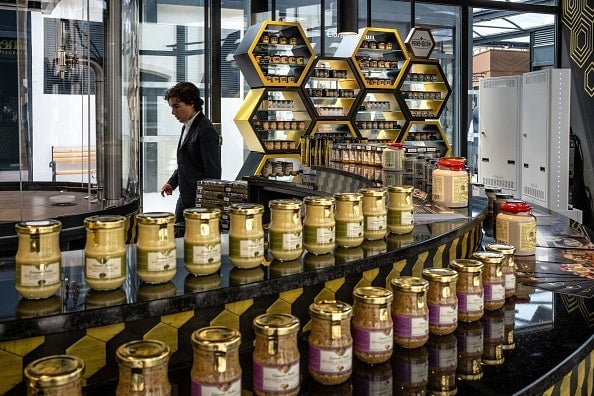Climate change is causing a mustard shortage in France
Dijon mustard is the latest food shortage casualty—causing distress for France, the biggest consumer of the condiment.


Dijon mustard is the latest food shortage casualty—causing distress for France, the biggest consumer of the condiment.
While produced in Burgundy, France, the mustard seeds for Dijon mustard largely come from elsewhere, highlighting the intricacies of the global food supply chain. At least 80% of the brown seeds come from Canada, Luc Vandermaesen, director of the Reine de Dijon mustard manufacturer and president of the Burgundy Mustard Association, told the New York Times. A heat wave across Alberta and Saskatchewan cut seed production by 50% last year. Even the smaller Burgundy harvest was hit hard by rising temperatures.
The shortage of seeds is already pushing up retail prices for Dijon mustard—which is used as a spread for sandwiches, a condiment for steak frites, and a crucial base for many classic French sauces—as much as 25%, Vandermaesen said. Some stores, when they have mustard in stock at all, limit customers to one jar per person. French chefs have resorted to appealing online for any spare mustard, and shoppers have come to the manufacturer’s headquarters—which does not sell the product itself—looking for the condiment, reported the New York Times.
Weather is the common theme for many food shortages
It’s not just the production of Dijon mustard that has been curtailed by severe weather. Since July 2020, Huy Fong Foods Inc. has been producing less Sriracha due to an ongoing chili pepper shortage that can be traced back to droughts in Mexico. High coffee prices have become more of a norm due to droughts, followed by severe frosts, in Brazil and heavy rains in Colombia, some of the largest coffee exporters in the world. There’s a looming chickpea shortage, also due in part to droughts in Canada, as well as flooding in Mexico and Australia. Oats and wheat have also been hit by weather woes.
The implications of shortages can be dire. With the potential shortage of chickpeas, not only does that means less hummus for Americans, but also a price hike for a dietary staple for those in the Middle East and south Asia.
The worsening weather conditions are increasingly putting food production at risk, raising the question of whether food shortages will be here to stay even long after the supply chain snags related to the pandemic and the war in Ukraine die down.